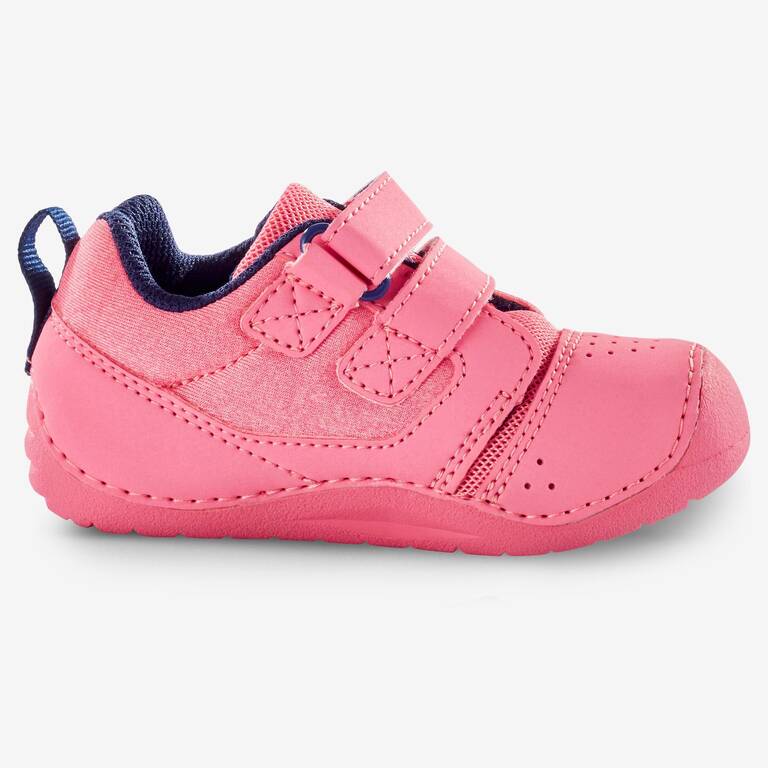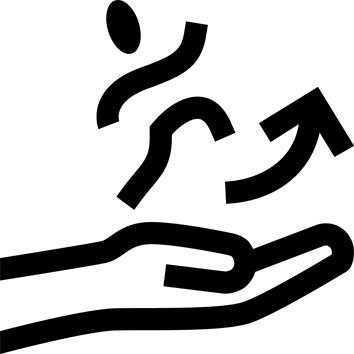Shoes designed for young children's feet:
Between ages one and six, feet play an important role in children's development and growth. Our shoes address the specific needs of children's feet during their many development stages.They have been designed with the help of biomechanical engineers to not hinder children's movement.
Which shoes should you choose for your child
From 1 to 2 years (sizes 4 to 7): learning to walk. Feet are flat, round and chubby: our I LEARN shoes are extremely flexible to support children's natural development.From 3 to 6 years (sizes 8 to 11): mastery of walking, running and jumping. The feet get stronger and more slender and the arch begins to form. Our I MOVE shoes are flexible and support the heel.
Characteristics of children's feet at ages 1 to 2:
While children's feet do not need shoes to develop, they are important for protection from the cold, damp and impacts, both indoors and out. The Domyos I LEARN shoes give children aged 1 to 2 years the protection they need, while allowing them maximum freedom of movement: flexible shoes let their feet develop naturally, and the thin, flat and flexible outsole provides a sensation of walking barefoot.
Choosing the right shoe size
Very easy to check the size: remove the shoe's insole and put it on the ground; place your child's foot flat on top of it, with their heel level with the back of the insole; if their toes are in the hatched area at the other end of the sole, it's the right size! Remember to regularly check their shoe size. Kids' feet grow fastest between the ages of 1 and 3 years: check our size guide on our website.
Arch support or not?
We are all born with flat feet. As we begin to walk, the arch gradually develops through the natural development of our foot muscles. This is why children's shoes do not need to have an arch support when they are still growing (unless otherwise indicated by a healthcare professional).
The benefits of physical activity at a young age
Regular physical activity from a very young age is beneficial for your child's physical and mental development. Learning healthy habits early on can help limit health problems later in life. Doing a group physical activity also supports your child's social integration and personal development.
Physical and mental benefits
What are the physical benefits?
Foster development of basic physical abilities (motor skills, balance and coordination)
Promote healthy growth
Fight obesity
What are the mental benefits?
Help build self-confidence
Facilitate social integration
Support personal development
Improve concentration
The sport
Do you know what baby gym is?
Designed for little ones from ages 10 months to 6 years, this sport consists of fun gym activities on obstacle courses with equipment that is specially designed for children.
About baby gym
Baby gym helps children to discover and develop their motor skills through different exercises and movements.
It is an introduction to all sports.
The benefits of the sport
Baby gym promotes psychomotor development in young children, especially the development of motor skills, coordination and balance. Balancing on beams, jumping, rolling and climbing are activities that help your child to develop autonomy and confidence.





























